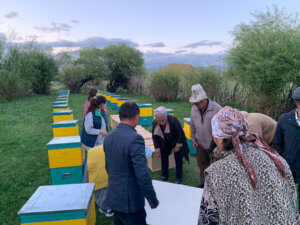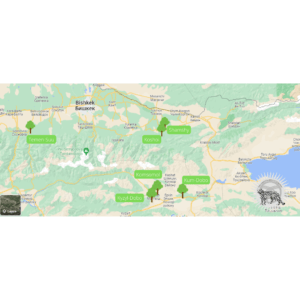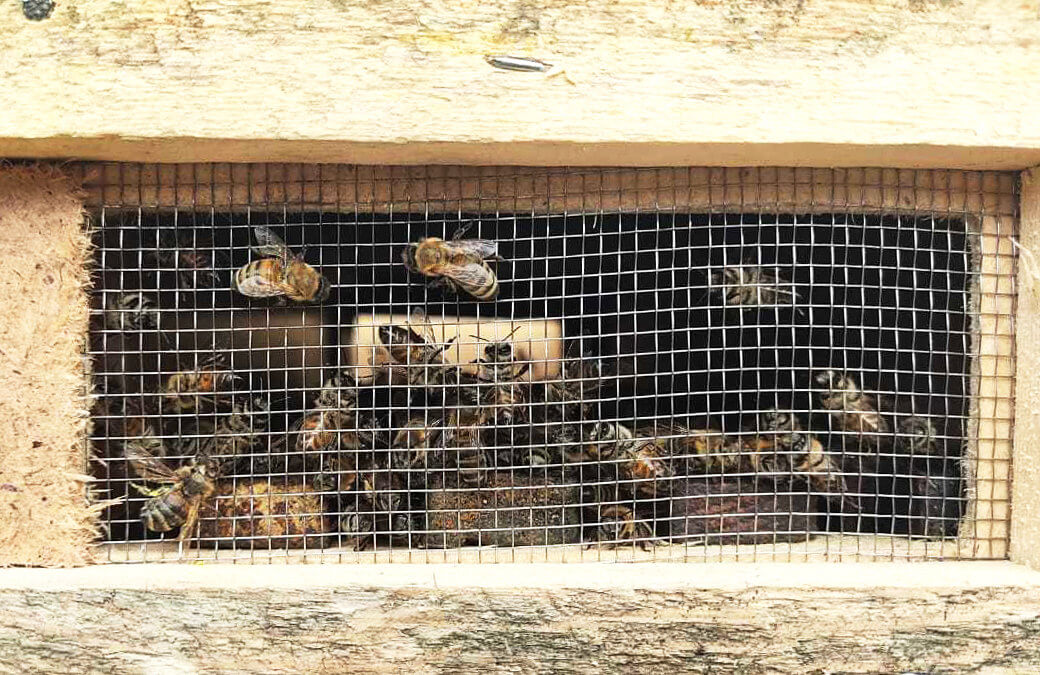How Bees and Trees Protect Snow Leopards
One hundred fifty honey bee hives were successfully delivered to their new homes in the mountains of Kyrgyzstan. Relocating the bees was a challenge, as Benazir, Snow Leopard Trust’s Project Assistant, shares, “The delivery process was so nerve-wracking because we were transporting live creatures over a long distance. The delivery kept getting postponed due to rainy weather. To add to the complexity, honey bee families are supposed to be delivered at night, so they can orient themselves once they are settled. Due to the specific challenges and risks involved, we did not sleep for two nights, constantly checking on the location of the truck with the bee families.”
These bees were delivered to communities living near snow leopard habitat as part of a new project that will bring additional revenue sources to the local livestock herders. Our goal is to help diversify the source of livelihoods for people to build resilience in the face of climate change. For many communities, this can help reduce economic reliance on livestock and decrease pasture degradation, addressing prominent threats to snow leopards in the Ala-Too Mountains. Diversifying peoples’ income sources can decrease their vulnerability to climate change impacts and increase their capacity to adapt to new challenges.

Currently, this project has two innovative initiatives co-created with communities — planting fruit orchards and beekeeping. We are excited to share that both are already underway in six participating communities, including Temen-Suu, Shamshy, Koshoi, Komsomol, Kyzyl-Dobo, and Kum-Dobo.

These initiatives are supported in part by The United Nations Environment Programme’s Vanishing Treasures project. The project seeks to help us better understand the direct impacts of climate change on snow leopards and their prey species and foster coexistence between humans and wildlife through community-based conservation.
Initial funding supported the delivery of plum, apple, apricot, and black currant seedlings to allow communities to start their orchards and fencing material to ensure the plants’ protection.
Fruit trees have already been planted across 10 hectares or about 25 acres in the six participating communities. These orchards will provide their first harvest after 2-3 years, but some less tangible benefits arrived more immediately.





